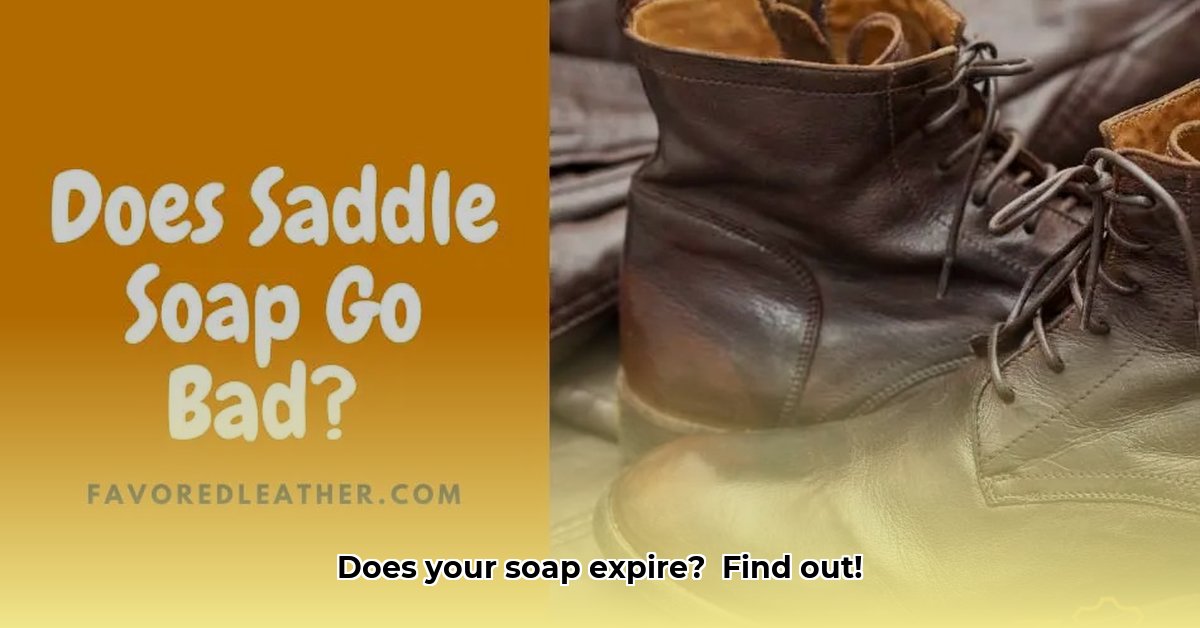How to Tell if Your Soap is Past its Prime
Ever picked up a bar of soap and thought, “Something’s not right here”? Maybe it smells a little off, looks discolored, or just doesn’t lather like it used to. You’re not alone! Many of us wonder about the shelf life of soap. This guide will walk you through everything you need to know, from spotting spoilage to smart storage tips.
Signs Your Soap Needs Replacing
Identifying expired soap is a bit like detective work. Here’s what to look for:
- The Sniff Test: Does your soap smell rancid, musty, or just plain weird? A change in fragrance is a key indicator of breakdown.
- Color Changes: Has your soap faded or developed unusual dark spots? Discoloration, particularly in lighter soaps, often suggests deterioration.
- Texture Troubles: Is your soap crumbly, slimy, excessively hard or soft, or just feeling off? Changes in texture can signal changes in its composition.
- Lather Loss: A weak, watery lather likely means your soap’s cleaning power is compromised.
Soap’s Shelf Life at a Glance
Different soaps have different lifespans. Here’s a general guide:
| Soap Type | Shelf Life |
|---|---|
| Commercial Bar Soap | 2-3+ Years |
| Commercial Liquid Soap | 2-3 Years |
| Natural/Handmade Bar Soap | 1-2 Years |
| Homemade Liquid Soap | 1-2 Years |
These are estimates. Environmental factors and storage practices can affect actual lifespan. Checking for a printed expiration date on commercial soaps is always a good idea.
Is Expired Soap Safe? Risks and Recommendations
Using slightly expired soap probably won’t cause major harm, but it might not clean effectively. However, soap with mold or significant bacterial growth should be discarded, as it could irritate skin or potentially cause infections, especially for those with sensitive skin or weakened immune systems.
Here are the potential risks:
- Reduced Cleaning Power: Expired soap may not lather well or remove dirt and germs effectively.
- Skin Irritation: Breakdown products can irritate sensitive skin, causing redness, itching, or dryness.
- Bacterial Growth (Especially in Liquid Soap): As preservatives degrade, bacteria can multiply, potentially causing skin issues.
Ongoing research continues to explore the complexities of soap expiration, but current evidence suggests minimal risk from slightly expired soap, so long as there are no visible signs of degradation such as texture or smell changes and mold.
The Secret to Longer-Lasting Soap: Storage Tips
Proper storage is crucial for maximizing your soap’s life and effectiveness. Here’s how:
- Dry is Best: Use a draining soap dish for bar soap, allowing it to dry thoroughly between uses. Store it on its side to promote even drying. For liquid soap, ensure the dispenser is tightly sealed.
- Cool, Dark, and Dry Environment: Avoid direct sunlight, heat, and humidity. A cool cupboard is ideal.
- Wrap Unused Soap: Protect it from air and moisture by wrapping it in wax paper, plastic wrap, or keeping it in its original packaging.
- Label Handmade Soaps: Mark the production date to track freshness.
Giving Old Soap a New Life
Even if your soap is past its prime for showering, don’t necessarily throw it away! Repurpose slightly expired soap for tasks like:
- Cleaning garden tools: Soap’s gentle yet effective cleaning power is perfect for removing dirt and grime.
- Pre-treating laundry stains: Grate some soap and dissolve it in water to create a stain-fighting solution.
- Cleaning delicate fabrics: Use a mild soap solution for hand-washing delicate items.
Important Note: Avoid using heavily expired or moldy soap for any cleaning tasks.
A Deeper Dive into Soap Expiration: What Happens Over Time
Soap doesn’t “expire” like food, turning toxic or dangerous overnight. Instead, its ingredients gradually degrade, impacting effectiveness and potentially leading to bacterial growth. This degradation is often accelerated by moisture, heat, and light.
Bar Soap vs. Liquid Soap: Bar soap tends to last longer due to its lower water content and fewer ingredients prone to spoilage. Liquid soap, with its higher water content and pump dispensers that introduce air, is more susceptible to bacterial growth.
Extending the Life of Your Homemade Soap
Since homemade soaps often lack preservatives, proper storage is especially vital:
- Cure Properly: Allow homemade soap to cure for 4-6 weeks in a cool, dry, well-ventilated area before use. This hardens the soap, making it last longer.
- Airtight Containers: Store cured soap in airtight containers or wrap individually in wax paper or plastic wrap to prevent moisture exposure.
- Optimal Storage Location: Choose a cool, dark, and dry location for storage, ideally a pantry or linen closet. Avoid the humid bathroom environment.
The Bottom Line
While using slightly expired soap isn’t likely a major health risk, it’s always best to err on the side of caution. By paying attention to the signs of expiration and practicing proper storage techniques, you can keep your soap fresh, effective, and safe for longer. Remember, when in doubt, replace it!
- Doctor Work Life Balance: Proven Strategies for Physician Well-being - November 20, 2025
- Find Your Work-Life Harmony: Quotes for a Fulfilling Life - November 18, 2025
- CRNA Work-Life Balance: Strategies for a Healthier Lifestyle - November 16, 2025
















